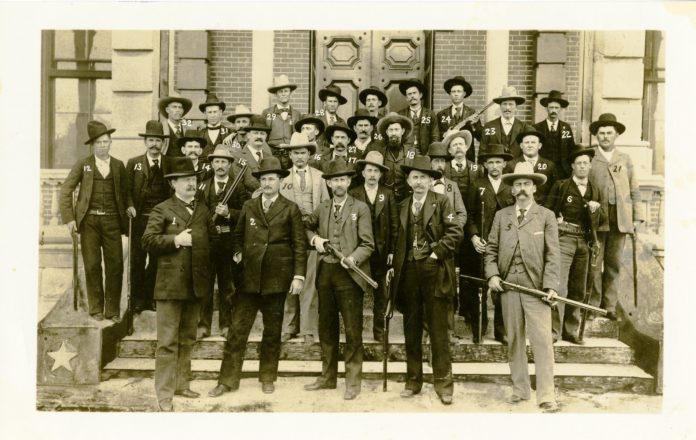The Once Ugly History of the Texas Rangers: Texas Devils
The Texas Rangers, created in 1823, had a brutal bloody past. According to Michael L. Collins (1950, 2008), in Texas Devils: Rangers & Regulars on the Lower Rio Grande, 1846-1861, Walter Prescot Webb, a racist historian, made crucial mistakes in ballooning the Texas Rangers with lies that would become myth for those wanting fake history. Rangers in Texas would eventually become the enforcers of white supremacy. In fact, white supremacists had a unit called the “Alamo Guards” which were nothing more than marauding killer vigilantes. The Texas Rangers (not the baseball team or the current group) had a white supremacist history. Murderous Texas Rangers have streets named after them in San Antonio. The last names are the telling story. Jack Hays, John “Rip” Ford, Ben McCulloch, Mat Nolan, Captain Richard King (of King Ranch fame), Captain William G. Tobin, John Littleton, Samuel Lockridge, Edward Burleson, Andrew Walker, and many others were directly or indirectly associated with brutal and racist activity in Texas.
Captain Jack Hays was called “Devil Jack” by the Comanche, and according to Collins, Hays was described in newspaper accounts as “the man whose name has been the terror of their nation.” Researchers report that a racist named John “RIP” Ford “was known to favor the annexation of Mexico.” This would mean that Texas Rangers were part of the overall plot to create a slave empire in Mexico by force. Ford would reportedly learn how to implement serial-type killings of Mexicans from Jack Hays. He was also in charge of hunting down Confederate deserters that refused to fight for the slave owners (for a number of reasons) during the Civil War. From the very beginnings the “Rangers” were used to enforce white racist rule. They developed against the background of White settlers wanting to control Mexican lands, hunt down runaway enslaved Black people, and serve as merchants of death against Native people.
The Rangers were used to murder and pillage Native American villages and later for revenge against Mexicans that stood up to their white supremacist hatreds. In every extremist group one can find members of people of color, or simply collaborators, that racists used. Hitler’s forces had Jewish collaborators, Native Americans had collaborators that cooperated with Andrew Jackson and owned Black slaves, African American collaborators helped their slave masters, and Irish collaborators that betrayed the struggle against British colonialism. These facts are needed to point out since there is always some effort on the part of fake history tellers to throw up as an excuse that an actual racist act, organization, or ideology had minority supporters in their ranks. No doubt, one could find them in the political world of today who are used against their own people.
A sample of Texas Ranger atrocities is quoted in a Corpus Christi newspaper, which read in part: “On the evening of November 16, (1859) … Brownsville overflowed with … brooding Rangers.” The Rangers went to the border hell bent on avenging the invented stories of “atrocities” committed against Whites. One report described the Texas Rangers as a “lawless mob” who dragged a Mexican from the town jail and murdered him with the rope. Texas suffered at the hands of an armed force that was organized to safeguard the slave owners, steal Native American lands, capture runaway slaves, and take Mexican lands while brutalizing the Mexican population. All of this was accomplished in part by a racialized Texas Ranger organization. These actions were the inheritance of white supremacy in remembering the slave owners at the Alamo.









